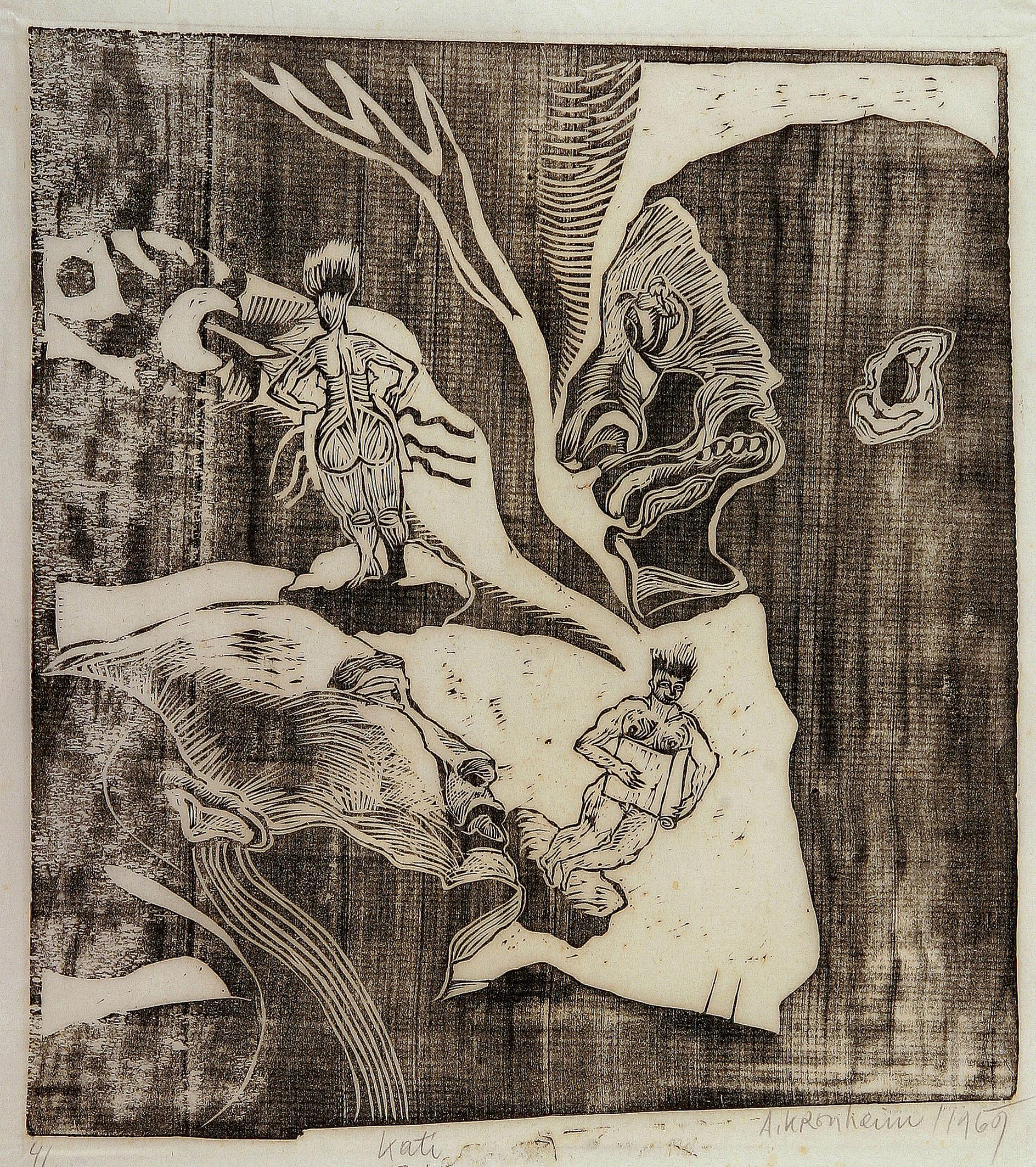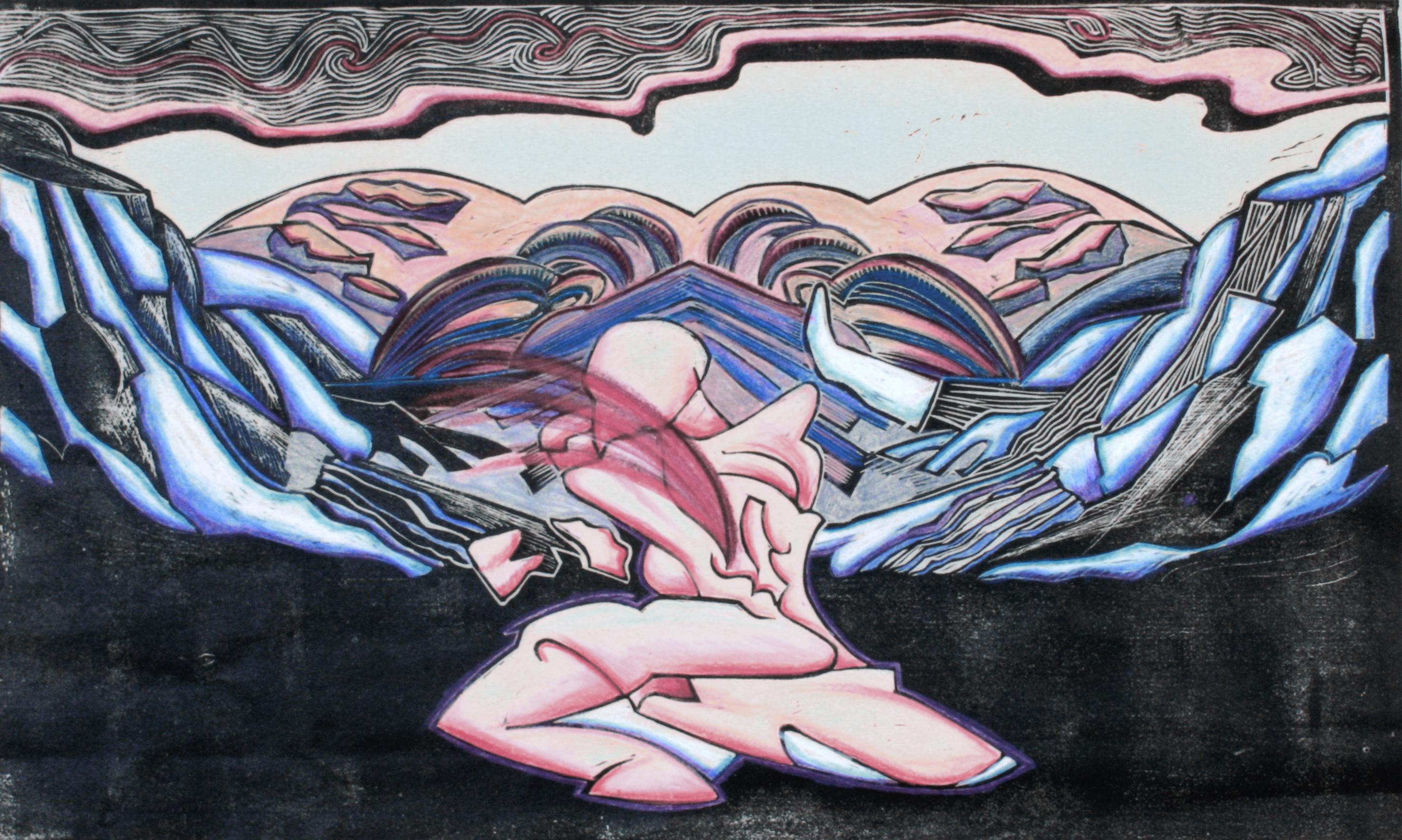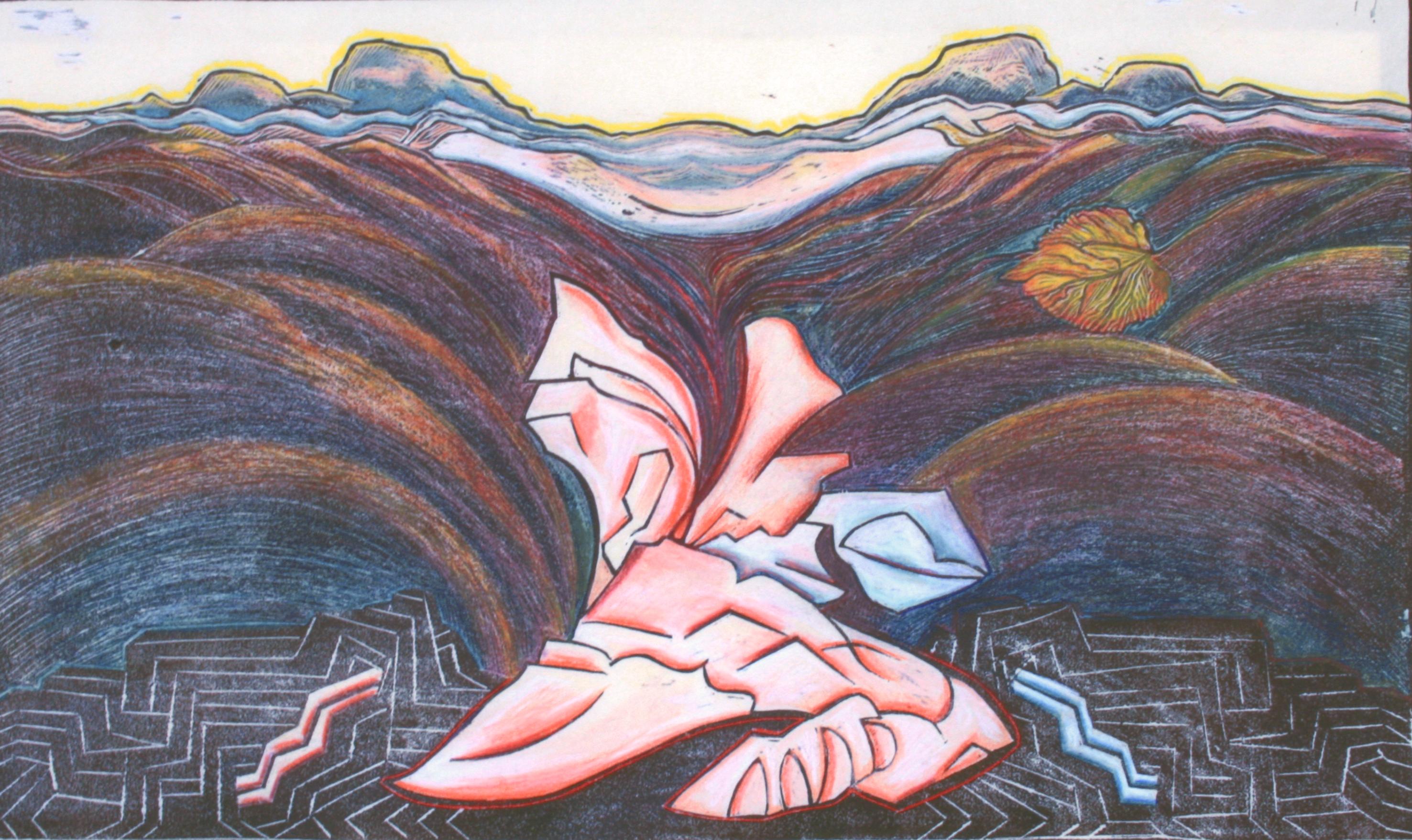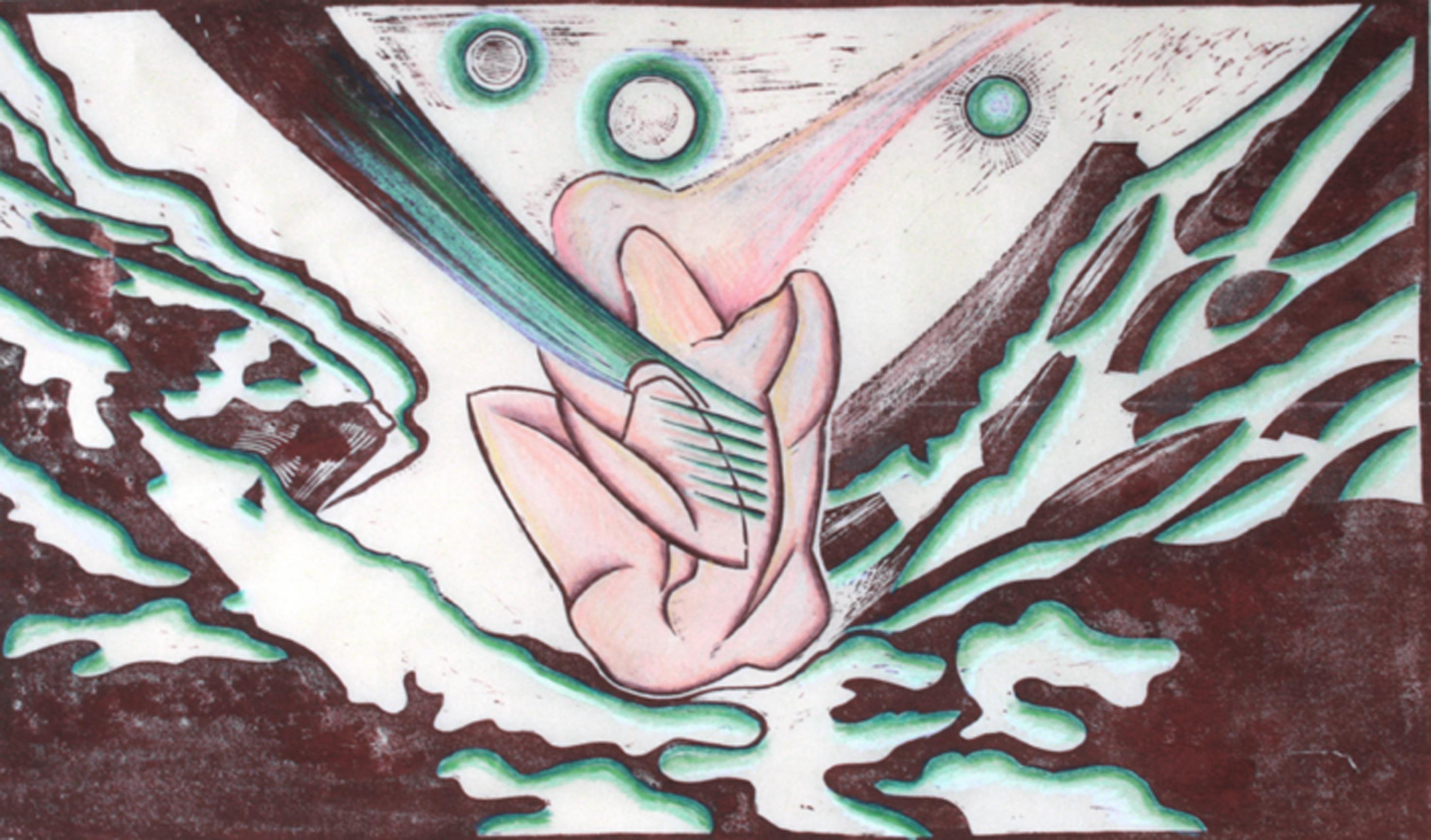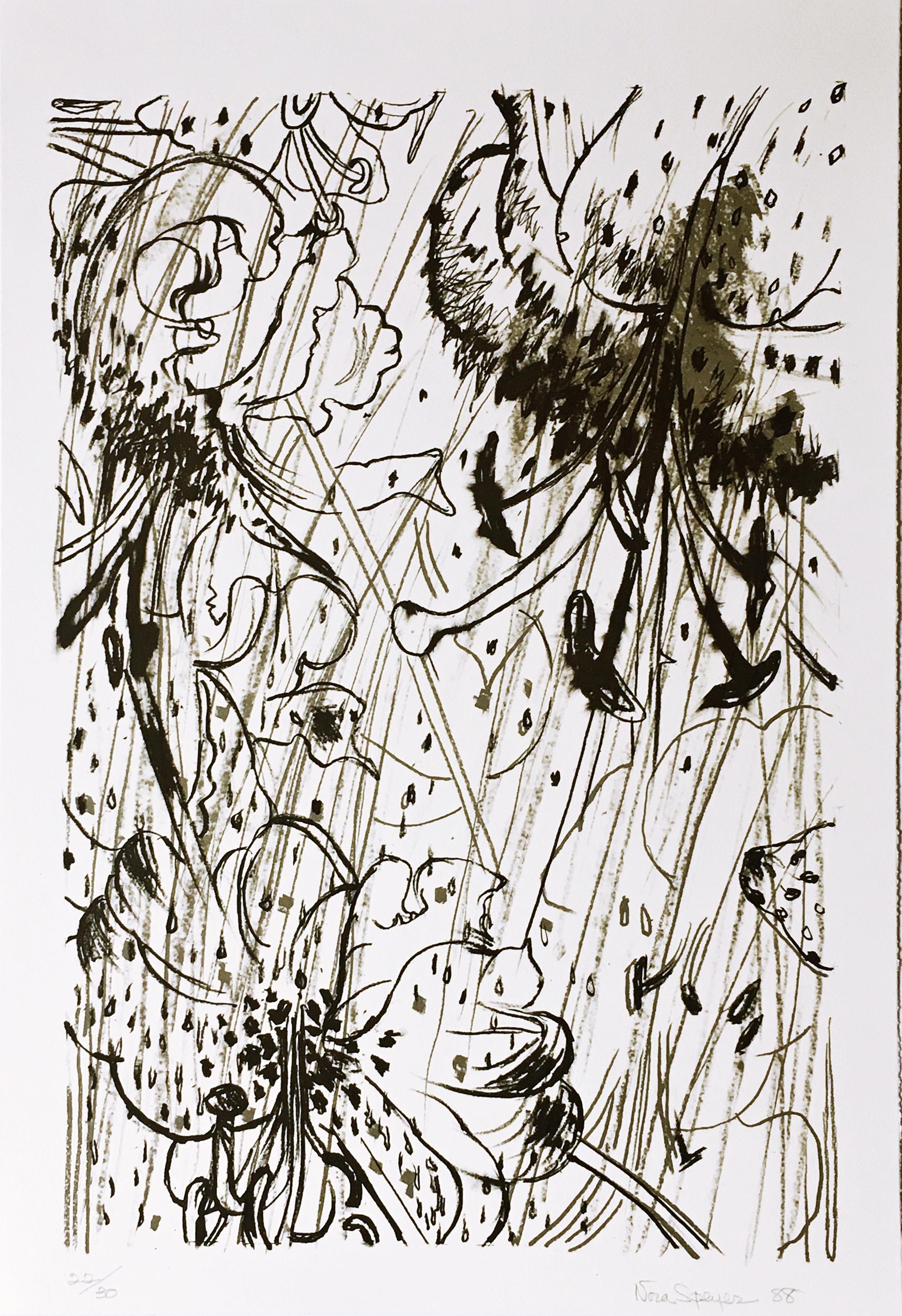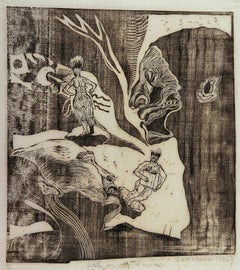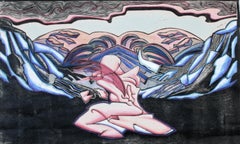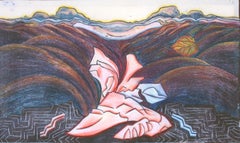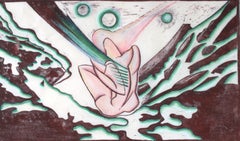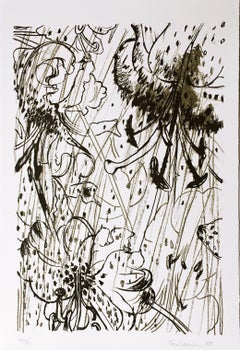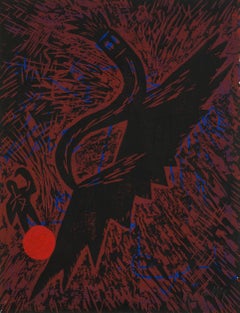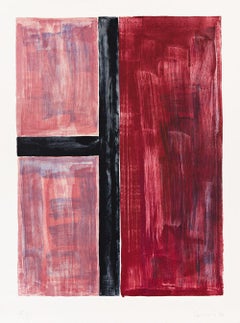Items Similar to Behind the curtains 2
Want more images or videos?
Request additional images or videos from the seller
1 of 9
Auguste KronheimBehind the curtains 21969
1969
$1,259.35
£962.04
€1,070
CA$1,774.48
A$1,953.87
CHF 1,013.17
MX$23,139.19
NOK 12,861.50
SEK 12,020.53
DKK 8,151.47
About the Item
Auguste Kronheim was born in Amsterdam in 1937. The artist makes woodcuts and drawings. She received her training in drawing from Hanns Kobinger and graduated from the Linz Federal Trade School, where she mainly learned the technique of wood cutting. In Linz she met the artist Fritz Aigner, with whom she was married between 1956 and 1962. Auguste Kronheim worked closely with her husband and even after the divorce they continued to have an intimate employment relationship. The artist lived for a while with her three children in the holiday home of her friends Heinrich and Annemarie Böll on the Irish island of Achill. Kronheim moved in 1964, she and her children moved to Dugort on Achill Island. She then moved to Dooega with the children and her new partner Michael White. During this time many works related to her stay in Ireland were created. In 1965 she gave birth to a fourth child, for whom Heinrich Böll took over the sponsorship. In 1966, after her residence permit for Ireland had expired, she returned to Austria. Auguste Kronheim and Fritz Aigner lived and worked together again until they moved to Kirchberg an der Donau. In Linz she met the young writer Werner Kofler and in 1970 moved with him and her children to Vienna. She had twins with Werner Kofler and in 1990 they separated. Then Auguste Kronheim dealt with the traditions of the Tibetan woodcut. The artist traveled to Naples several times between 1991 and 1996. Thereby she got to know the traditional printing techniques of the monasteries. Your artistic work was extremely determined during this period. Auguste Kronheim now lives in Vienna. One of her sons is the painter Brendan Kronheim.
Auguste Kronheim worked mainly in the woodcut technique. Her motives show the hard, barren, often merciless life that she experienced in the Mühlviertel, in Ireland or later in Nepal. She visualizes the traditions and myths she has experienced on her travels. Her stylistic devices are provocation, snub and over-drawing. Her wood cuts are characterized by a dualism between plasticity and flatness. The two-dimensionality is created by clear delimiting contours between the black and white areas, where, on the other hand, fine hatching or patterns can create an effect of depth. The black or white areas can move into the foreground or background of the picture through a specific structure. Depending on the design of the figures, these can emerge three-dimensionally or appear flat.
Sources: couchgallery/Auguste Kronheim
- Creator:Auguste Kronheim (1937 - 2021, Austrian)
- Creation Year:1969
- Dimensions:Height: 31.5 in (80 cm)Width: 23.63 in (60 cm)
- Medium:
- Movement & Style:
- Period:
- Condition:
- Gallery Location:Wien, AT
- Reference Number:1stDibs: LU1782212384042
About the Seller
5.0
Vetted Professional Seller
Every seller passes strict standards for authenticity and reliability
Established in 1973
1stDibs seller since 2022
15 sales on 1stDibs
Typical response time: 10 hours
- ShippingRetrieving quote...Shipping from: Wien, Austria
- Return Policy
More From This Seller
View AllKati
Located in Wien, 9
Auguste Kronheim was born in Amsterdam in 1937. The artist makes woodcuts and drawings. She received her training in drawing from Hanns Kobinger and graduated from the Linz Federal T...
Category
1960s Modern Abstract Prints
Materials
Woodcut
Entfernung (Serie) - 3/30 - Nr.3
Located in Wien, 9
Auguste Kronheim was born in Amsterdam in 1937. The artist makes woodcuts and drawings. She received her training in drawing from Hanns Kobinger and graduated from the Linz Federal T...
Category
20th Century Modern Abstract Prints
Materials
Woodcut
Entfernung (Serie) - 3/30 - Nr.5
Located in Wien, 9
Auguste Kronheim was born in Amsterdam in 1937. The artist makes woodcuts and drawings. She received her training in drawing from Hanns Kobinger and graduated from the Linz Federal T...
Category
20th Century Modern Abstract Prints
Materials
Woodcut
Entfernung (Serie) - 3/30 - Nr.2
Located in Wien, 9
Auguste Kronheim was born in Amsterdam in 1937. The artist makes woodcuts and drawings. She received her training in drawing from Hanns Kobinger and graduated from the Linz Federal T...
Category
20th Century Modern Abstract Prints
Materials
Woodcut
Entfernung (Serie) - 3/30 - Nr.4
Located in Wien, 9
Auguste Kronheim was born in Amsterdam in 1937. The artist makes woodcuts and drawings. She received her training in drawing from Hanns Kobinger and graduated from the Linz Federal T...
Category
20th Century Modern Abstract Prints
Materials
Woodcut
Gehöft am Hügel (Kebelmühl)
Located in Wien, 9
Auguste Kronheim was born in Amsterdam in 1937. The artist makes woodcuts and drawings. She received her training in drawing from Hanns Kobinger and graduated from the Linz Federal T...
Category
1960s Modern Abstract Prints
Materials
Woodcut
You May Also Like
Untitled, from the Long Point Gallery Portfolio
Located in New York, NY
Nora Speyer
Untitled, from the Long Point Gallery Portfolio, 1988
Lithograph on paper with deckled edges
Hand signed, numbered 22/30 and dated on lower front
22 × 15 inches
Unframed
Hand signed, numbered 22/30 and dated on lower front
Publisher: Long Point Gallery, Inc., Provincetown, Massachusetts; Printer: Bruce Porter from Trestle Editions Limited, New York
Rarely to market, this stunning 1988 woodcut was created by Nora Speyer as part of a portfolio produced for sale by Long Point Gallery, an artist's cooperative in Provincetown, Massachusetts.
Superb provenance as it is was acquired from the original Long Point Portfolio. This will be the first time the work will be removed from the portfolio.
It is hand signed and numbered from a very small edition of only 30; it is in fine condition, unframed and never framed, and housed in the original portfolio box, with the original colophon page, which also included works by 11 other artists.
For reference and provenance we have included an image of the colophon page from the complete portfolio.
About Nora Speyer:
The most exciting place to me is where I can communicate with the greatest number of artists. I can't live without some artists around. I'm not saying artists are likable. They can be very objectionable, but they are still my world.
Nora Speyer
Born in Pittsburgh, Speyer enrolled at Temple University's Tyler School of Art when she was sixteen. It was there she became roommates with Lillian Lent...
Category
1980s Abstract Abstract Prints
Materials
Pencil, Lithograph
"Untitled"
By Nahum Tschacbasov
Located in Southampton, NY
Artist proof, aquatint, mixed intaglio engraving by the Russian/American artist, Nahum Tschacbasov. Pencil signed and dated lower right, 1947. Artist Proof. Condition: good; slight...
Category
1940s Surrealist Figurative Prints
Materials
Engraving, Aquatint, Intaglio
$420 Sale Price
20% Off
Untitled
Located in New York, NY
Linocut in colors on wove paper, signed and dated in pencil lower right and numbered 'III 50/50' on the verso, published by Maximilian Verlag/Sabine Knust, Munich, the full sheet, fr...
Category
1980s Expressionist Animal Prints
Materials
Linocut
$720 Sale Price
20% Off
Untitled
By Günther Förg
Located in New York, NY
Color lithograph on Rives BFK, 2004. Signed by the artist in pencil lower right. Numbered II/XX in pencil lower left. One of 20 numbered artist's proofs, aside from the regular edi...
Category
Early 2000s Contemporary Abstract Prints
Materials
Lithograph, Color
The bird behind the curtain -Timothy Archer, 21st Century, Contemporary painting
By Timothy Archer
Located in Paris, FR
Oil paint and pastel on paper
Signed and dated by the artist
Category
2010s Contemporary Figurative Paintings
Materials
Paper, Oil Pastel, Oil
Untitled #1
Located in San Francisco, CA
This artwork, Untitled #1 is an original color aquatint on Wove paper by noted Mexican artist Luis Lopez Loza, b.1939. It is hand signed and numbered 4/50 i...
Category
Late 20th Century Abstract Abstract Prints
Materials
Aquatint
